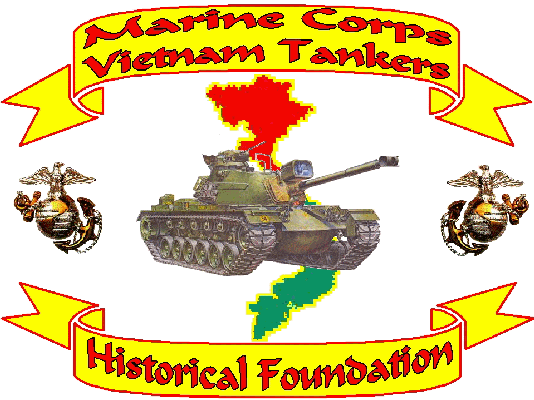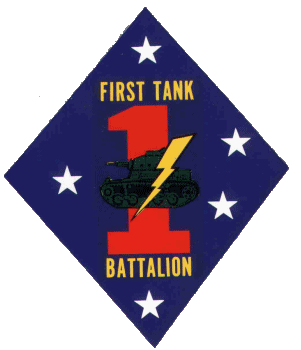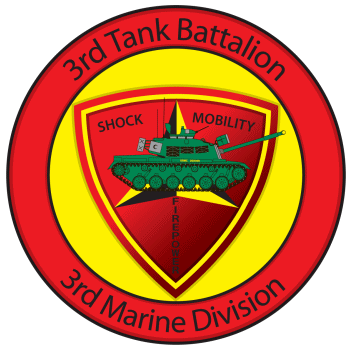
   |
|
Captain Daniel Wilder Kent, KIA Submitted by Harry C. Christensen, ©
2003
Capt. Kent on left with Top White. Daniel Kent, known by his friends and family as Danny Kent, was all Marine. He was killed in action on January 24, 1968. Many of us recall his level of discipline. Without doubt he ran a taught ship. Along with many others, I felt the sting of that discipline. I recall a wound on my left arm, the result of a playful encounter with an abandoned mortar pit. Unfortunately for me the wound required treatment at the aid station at the Rock Pile. Upon my return to Camp Carroll an investigation was held to determine culpability. Fortunately for me, my crew and I “reconstructed facts” about how the injury occurred while destroying bunkers at the Fish Bowl position, which was east of the Rock Pile. I just barely dodged the bullet. In addition, some of you may recall that in December, while I slept one night at Camp Carroll some “scumbag” took my pistol and a wonderful shoulder holster (provided to me by Lt. Himes after S/Sgt. Warton traded mine for a case of beer.) Again, I was under the gun (no pun intended). Due to the able defense provided by Lt. Harris Himes, I was acquitted of negligence. Such were the events of discipline that we all recall at Camp Carroll in 1967, relating to Captain Kent. A year or two ago I made the acquaintance of a gentleman who turned out to be the best friend of Danny Kent. I learned that Danny Kent was much like the rest of us. He loved scouting and often spent weekends camping in the woods with his father and friends. I was told that he did like things his way! His father was devastated as a result of his death . . . and died never fully able to reconcile this loss. I recall the Captain watching with envy our touch football games with the clear yearning that he would like to have been involved. He was a great advocate of the process that much of us were troubled with--specifically, the division between enlisted men and commissioned officers. I recall a number of situations where Lt. Himes (to his credit) was sanctioned for his association with enlisted men. Nevertheless Captain Kent adhered to the code of ethics he learned at Quantico, Virginia, and commanded his company in that respect and manner. Some may recall that (after a few beers) a number of us convinced Terry Bocchino (who had the keys to the ammo dump) to provide us with a number of flares (Matty Mattels), which we promptly sent airwards. The entire hill was in chaos, the sirens blasting away. I will never forget Kent charging around Camp Carroll in a steel helmet with pistol in his hand and covered by a flack jacket in his green skivvies. Many recall the formation the next day and the “dressing down” we received from the Captain. The day Captain Kent died he approached my hooch and informed me that an ambush was underway on Highway 9 just south of Camp Carroll. We were ordered to meet at “the Gate” to provide support. We coordinated at the Gate leading to Highway 9 -- my tank in the lead, two army dusters and the Camp Carroll flame tank bringing up the rear. Along with us were a significant number of Marine infantry (Grunts) who took up positions on the tanks and Dusters. I listened intently on the radio to those in the ambush site who begged for help as they encountered heavy automatic weapon fire along with a significant number of RPG’s. I will tell you now as then that I was frightened beyond my years (21). We turned right on Highway 9 and headed toward the site, Captain Kent, riding on the outside of my tank, his pistol in his hand. We reached the ambush site rather quickly and witnessed the carnage therein, coming to a stop some 100 meters from the site. I could clearly hear the incoming rounds, screams of the dying and their pleas for help. Captain Kent ordered us to stop and attempted to coordinate an effort to engage the NVA. We thought at the time that we were engaged with the standard small ambush scenario and were not aware that we had stumbled upon a concerted effort by the NVA to attack Camp Carroll. Battle reports I have read included elements of the 52nd and 48th NVA regiments along with 320th NVA divisions. Accordingly, we held our position and began to recon by fire at the flanks of the ambush site. To his credit, the Captain did not interfere with my command of the tank but dismounted to coordinate efforts with the dusters and the infantry. I remained in the T.C. copula to command the tanks ordinance. I must have made a great target as the tank immediately sustained small arms fire. In the course of the initial action, my tank infantry phone (T.I. phone) was disabled. As a result, Captain Kent and I began to coordinate the tanks fire by hand signals, as I could not hear his voice over the resulting action. This solved the problem but apparently caught the attention of the NVA who were not pleased with the effort of the tank guns. Accordingly, more and more NVA small arms fire impacted upon the tank. A ricochet round struck my face above my right eye and I was blinded for a moment. I was bleeding profusely and attempted to get a rag tied in place when Captain Kent and a corpsman mounted the tank. I stated to both that I was fine. At that time, one of those life-changing events occurred. The Captain asked me if I “felt up” to continuing as tank commander. I said I did. On the ground, Captain Kent continued to organize the infantry to fire on both sides of the ambush site, all of which was accomplished with great result. In addition, my tank in the lead began the same manner of fire. Over the course of some time, my tank raked the ambush site with 90mm, 50 cal. and 30 cal. In the course of this action, my tank fired much of its canister and HE rounds; the 50 caliber machine gun had malfunctioned due to a broken cable; and the 30 cal was nearly out of ammunition. Many, many, many NVA were killed. At some point, my tank and the duster behind decided to rush the ambush site to aid those in distress. The infantry again loaded onto the vehicles, which began to enter the ambush site at a good clip. Just prior to entering the site, Captain Kent shouted that we were receiving automatic weapon fire from both sides of the road. He didn’t have to inform me as I could hear and see the effect. With much of the tank’s firepower compromised, I requested from the loader and received the grease gun along with a small duffle bag of magazines. I began to fire at every target including spider holes along with the very brazen NVA soldiers who suddenly appeared with RPG’s from both sides of the road. Captain Kent called my attention to “that little bastard in the soft cover” with an RPG to our right on a small knoll. I fired the grease gun and he doubled over and fell. Another appeared and I again fired. It seemed as though they were everywhere along with the swishing sounds of the fired rockets. As I turned to acknowledged my efforts to Captain Kent, who was riding on the outside of the tank next to the loader’s hatch firing away with his pistol seconds before, I watched as a round or two entered his back and exited his chest. Some of his chest splattered upon my face and chest. Clearly he was badly wounded. I will never ever forget his expression as he looked to me for help. Witnessing the occurrence, I knew he was dead or badly wounded. I announced to the crew of my tank that he had been hit and that I was going to bring him in. Just as I reached him and attempted aid, a RPG exploded nearby wounding me again. I attempted to bring him into the turret again when another RPG impacted upon the turret. I was wounded again. I patted his helmet assuring him that I would take care of him as I pulled him toward the hatch, a recoilless rifle round impacted upon the turret blowing him off the tank and wounding me again. The last NVA round caused a fire inside and outside the turret. Accordingly, after an attempt to put out the fire without success I ordered the crew to disarm the weapons and abandon the tank. As I mounted the turret, another RPG exploded on the turret killing and wounding many including me again and blowing me from the tank's turret to the right side of the ambush site. As I scrambled to cover, I saw the body of Captain Kent by the roadside smoldering from his many wounds. He had been struck in the back at least twice. In addition, he sustained several RPG wounds. Survivors were pinned down for
several hours before help arrived. I had received multiple wounds . . .
how many I'm not sure. Captain Daniel W. Kent died that day leading his
company into combat. I will never forget the countenance of Captain Kent
– blond hair and fair complexion, a pistol in hand; riding into
immortality as all Marines would wish to die. Most of all I recall the
expression of hope on his face . . . in my dreams I often relive that
event and each time hope that this will be the occasion that I am
successful in pulling him inside the tank turret. As for the North
Vietnamese, both Sterling Young and Terry Bocchino visited the ambush
site shortly after the action and will testify to several hundred NVA
bodies present. Some battle reports I have read cite the number as high
as 600. (I would be happy to verify these events with “After Action”
reports and other material that I have gathered over these many years.)
Captain Daniel Kent’s efforts that day were in keeping with the highest
traditions of the United States Naval Service. Captain Kent was 24 years
old at the time of his death. |
